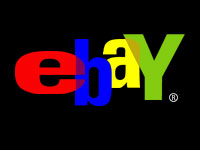
The U.S. economy has entered a vicious cycle where housing, employment and financial troubles are forcing consumers to tighten their purse strings and closely evaluate their every purchase. Retailers are also feeling the grip of a tightening economy as they compete aggressively for a diminishing number of buyers’ dollars.
In response, innovators in e-commerce have introduced creative marketing models and alternative payment systems that offer more security than credit cards, no interest, and free products or purchase incentives. These methods are especially attractive to online merchants because they actually increase a customer’s willingness to buy and create new revenue streams.
PayPal was a pioneer in this space, and its US$1.5 billion price tag shows just how valuable alternative payment methods are — especially since it pulls in billions of dollars of revenue for online auction giant eBay. The current success of some companies’ innovative marketing models, as well as firms like Bill Me Later and TrialPay, indicate that alternative payment platforms will soon become a mainstream player in the multi-billion dollar payments industry.
Profitable Marketing Models
In the download-driven software industry, retail sales are plummeting, and stores like CompUSA are closing their doors. Users are much less willing to pay for software now that they are accustomed to getting it free through OEM deals, new computer purchases and trial or basic editions.
Savvy software companies have reacted by developing new revenue streams to make a profit even when customers won’t pay for full software licenses. For example, DivX, RealNetworks, Adobe, Mozilla and countless other big software brands bundle in the Google Toolbar as part of their install process. Google pays a fee every time the Toolbar is installed, so even if a user doesn’t pay for the original free, “lite,” or trial download, the software publisher still makes a profit.
In the photography industry, digital camera sales first surpassed those of film cameras in 2003, according to Photo Marketing Association International. Five years later, digital cameras set the standard for photo taking and have significantly reduced the demand for film processing.
Online photo retailers and sharing sites such as Photobucket, dotPhoto and countless others have adapted to the change by offering digital photo printing services. One in particular, PhotosFree.com, found a way to stand out among the stark competition: offer photo prints for free.
Through this creative marketing method, customers get one free print for every sponsored coupon they choose — up to 40 prints per month. The sponsor’s ad fee pays for the cost of printing the photos, customers get free prints of their digital photos, and PhotosFree.com generates incremental revenue in a competitive market.
Alternative Payment Platforms
The advertiser-paid, everyone-wins concept behind PhotosFree.com is very similar to ad-supported payment platforms where almost anything online — software, subscription services, games and retail — can be paid for with advertising dollars.
This payment method lets customers “pay” for products online by completing one advertiser offer, essentially giving them a free product with every purchase. The advertisers’ fee pays for the free product, ensuring that the merchant makes a sale and both parties walk away with a loyal customer. TrialPay invented this concept in 2006, which was so compelling that the company quickly received backing from the investors of Google and Skype.
Another leading alternative payment method, Bill Me Later, entices shoppers to buy when they don’t have enough cash or are worried about entering billing information on the Web. This payment system allows customers to buy products online but pay offline after receiving a statement in the mail. Its popularity has attracted more than 1,000 industry-leading merchants, including Amazon.com, which also made a large equity investment in the company.
Integrating Alternative Payment Options
Any company that conducts business online should consider integrating alternative payment platforms. With unlimited earnings potential, minimal integration costs, and lower rates and more perks than credit cards, these alternative options attract tens of thousands of top-tier merchants across virtually all industries. In fact, a recent survey conducted by First Annapolis Consulting found that, of 83 mid-sized e-commerce retailers, 41 percent accept alternative payments.
Unlike traditional ways to pay, alternative payment models create new revenue streams. They generate sales from transactions that otherwise would have resulted in abandoned shopping carts, unfulfilled subscription renewals or sign-ups for free trials. They allow online marketers to evolve with the demands of today’s discerning consumer. And they offer no-brainer, cost-per-acquisition opportunities to attract valuable advertising dollars.
The current state of the economy has encouraged widespread adoption of alternative payment platforms by online retailers and shoppers alike. However, the relevance and popularity of these payment methods extend beyond a down economy. The multi-billion dollar payments industry is undergoing a transformation, and soon these “alternative” payment methods will be considered mainstream competition for credit cards and even cash. Just as the Internet has changed the way people shop, innovative payment methods are changing the way people pay.
Alex Rampell is the co-founder and CEO of TrialPay.















































Social Media
See all Social Media